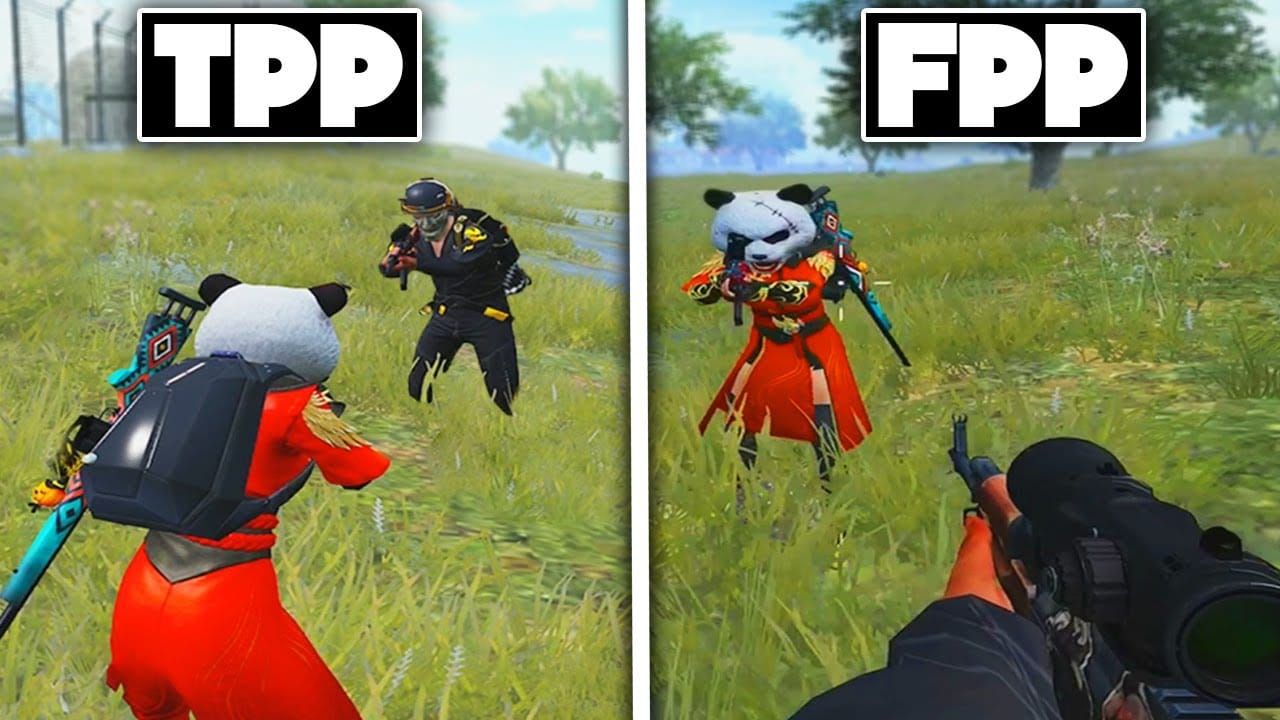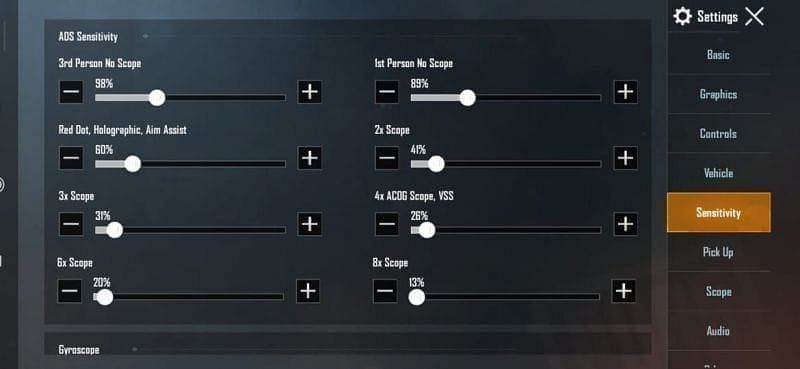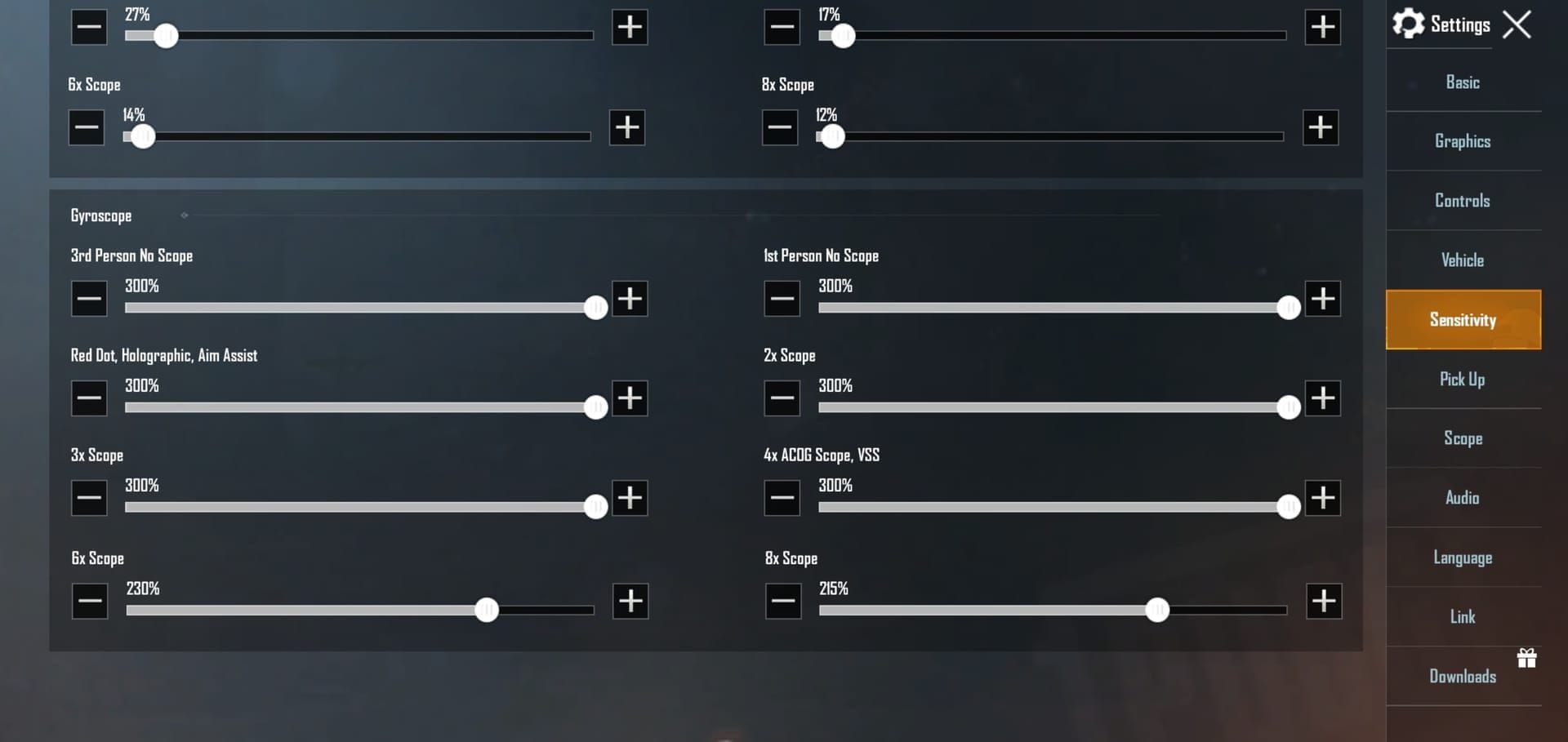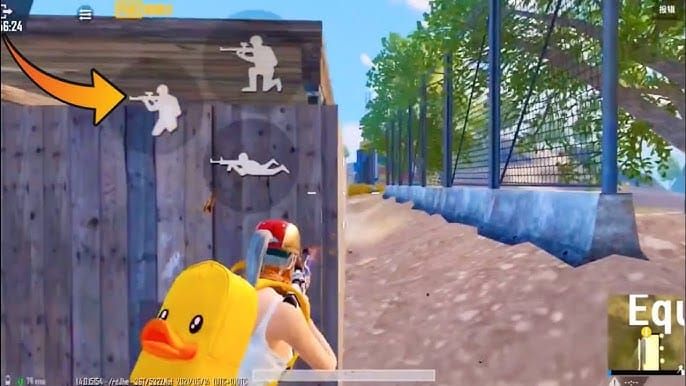Master PUBG Mobile's TPP and FPP modes with optimized sensitivity splits, advanced gyro curves, and professional peek techniques. This guide covers 2025 meta analysis, device-specific configurations, and pro player settings for competitive gameplay.
TPP vs FPP Fundamentals
Tactical Advantages Breakdown
Here's the thing about TPP that most players don't fully grasp – it's not just about seeing around corners. The peripheral vision advantage fundamentally changes how you approach every engagement. You're essentially playing with a security camera system, monitoring your surroundings without telegraphing your intentions through character movement.
That wider camera angle? It transforms defensive positioning into an art form. I've watched countless players use cover effectively in TPP, planning rotations while staying completely hidden. It's like having eyes in the back of your head.

FPP strips all that away. Suddenly, you're living in your character's shoes – literally. This isn't just a different camera angle; it's a completely different game that demands you master audio cues and develop almost supernatural game sense. The skill ceiling shoots through the roof because you can't rely on camera tricks anymore.
Combat Mechanics Variations
TPP combat feels like chess sometimes. Pre-aiming around corners without exposure, using camera manipulation for surprise attacks – it rewards patience and tactical thinking. Quick peek mechanics become your best friend when you're gathering intel without commitment.
FPP? That's pure mechanical warfare. Peeker's advantage becomes your religion, and aggressive players who've mastered angle-holding dominate. Your crosshair placement better be pixel-perfect because you won't get a second chance to spot that enemy camping in the corner.
The weapon handling fundamentals matter more in FPP too. Recoil control isn't just helpful – it's survival.
For enhanced gameplay experience, top up PUBG UC no delay through BitTopup ensures uninterrupted access to premium features and cosmetics with superior pricing, instant delivery, and secure transactions.
2025 Meta Analysis
Professional Tournament Statistics
The numbers tell a fascinating story. TPP still dominates Asian tournaments – we're talking 75% of major events. Why? Squad coordination and strategic depth matter more than individual mechanical skill in these regions. Teams can execute complex strategies because they have that camera advantage.
But here's where it gets interesting – FPP is gaining serious ground in Western esports. 60% of European and North American tournaments have switched to first-person, and the reason is pure entertainment value. Those highlight reels that get millions of views? They're almost exclusively FPP moments.
Community Preference Trends
The player base split is pretty revealing. TPP maintains that 70% global dominance, but don't mistake that for superiority – it's accessibility. Lower skill barriers mean more players can enjoy the game without getting demolished every match.
That 30% FPP crowd? They're the hardcore enthusiasts. These players specifically seek out skill-based challenges and mechanical improvement. Asian servers show an 85% TPP preference (tournament influence is real), while European and North American servers are almost evenly split at 55% TPP and 45% FPP.
Sensitivity Splits Configuration
TPP Sensitivity Setup
TPP camera sensitivity needs to be aggressive – I'm talking 120-150% for effective scanning. You need that rapid environment monitoring capability. Free Look should hit 150% because when you're stationary, maximum peripheral coverage can mean the difference between life and death.
Here's my recommended ADS scaling: Red Dot/Holographic at 60-70% for those aggressive close-range fights, 3x scope around 25-30% for medium-range precision work, and 6x/8x scopes at 15-20% for long-range accuracy.

Gyroscope integration gets technical fast. TPP No Scope gyro should run 300-400%, Red Dot 280-400%, 3x 180-300%, 6x 120-170%, and 8x 55-100%. These ranges give you room to find your sweet spot.
FPP Sensitivity Optimization
FPP demands a completely different approach. Lower camera sensitivity – 100-120% max – because you're prioritizing stability over rapid scanning. That restricted visual field means every movement needs to be deliberate and calculated.
ADS sensitivity follows similar scaling principles but with adjusted baselines. Red Dot/Holographic 50-65%, 3x scope 20-25%, 6x scope 15-23% (I personally recommend starting at 20%), 8x scope 8-17% (12% is a solid starting point).
Gyroscope scaling stays parallel: FPP No Scope gyro 300-400%, Red Dot 280-400%, 3x 180-300%, 6x 120-170%, 8x 55-100%.
Cross-Mode Conversion Techniques
Converting between modes isn't just math – it's understanding how perspective changes everything. TPP-to-FPP conversion typically means reducing camera sensitivity by 10-15% while keeping ADS values consistent. Jonathan Gaming (one of the absolute legends) uses identical gyroscope settings across modes, maintaining that 300% ADS gyro for Red Dot/2x scopes.
Testing conversion accuracy requires systematic Training Ground work. Spend 10-15 minutes per mode testing target acquisition, spray control, and scope transitions. Make adjustments in 5% increments, and here's the crucial part – allow 3-7 days for adaptation between major changes. Your muscle memory needs time to adjust.
Gyro Curves Mastery
Understanding Gyro Sensitivity Curves
Gyroscope curves create non-linear response patterns that optimize control across different engagement ranges. It's not just about having high sensitivity – it's about having the right sensitivity for each situation. Higher values for close-range scopes (Red Dot 280-400%) and progressive reduction for long-range optics (8x 55-100%) prevents over-correction during those crucial precision shots.

Advanced curve configuration utilizes device tilt mechanics for natural recoil compensation. Downward device tilting during sustained fire provides organic recoil control – particularly effective with 5.56mm weapons like the M416 and SCAR-L. Jonathan Gaming's 300% ADS gyro for Red Dot/2x scopes exemplifies aggressive curve settings that prioritize speed over stability.
Device-Specific Gyro Tuning
High-end devices (iPhone 14/15 series, Samsung Galaxy S series) can handle maximum gyro sensitivity ranges thanks to superior processing power and sensor accuracy. These devices can run 400% gyro values across all scopes while maintaining stability. Always enable 120Hz refresh rates for optimal gyro performance.
Mid-range devices need conservative tuning to prevent lag issues. Reduce baseline sensitivity by 10-15%: No Scope 300-350%, Red Dot 250-350%, 6x 100-150%, 8x 45-85%. Budget devices demand significant reduction: No Scope 200-300%, Red Dot 200-300%, scaling proportionally for higher magnifications.
Gyro Integration with Touch Controls
Hybrid control schemes combine gyroscope precision with touch control versatility. Use thumb controls for major camera movements while relying on gyro for fine adjustments and recoil compensation. Weekly calibration is essential – place your device on a flat surface and use in-game calibration tools.
For optimal performance when acquiring premium content, purchase UC for PUBG cosmetics via BitTopup's secure platform with competitive pricing, instant delivery, and 24/7 customer support ensuring uninterrupted focus on sensitivity optimization.
Peek Discipline: Advanced Movement Techniques
Shoulder Peek Mechanics
Shoulder peeking exploits character model positioning to gather information while minimizing exposure. Right-hand peeks provide superior angles due to weapon positioning and reduced body exposure – this isn't just preference, it's geometry.

Pre-aim common angles before initiating peeks. Maintain crosshair placement at head level for immediate target acquisition. Enable Peek & Fire settings for shooting while maintaining partial cover – this mechanic allows engagement without full body exposure, particularly devastating in TPP scenarios.
Advanced peek discipline integrates movement mechanics. Combine crouch-peeking for reduced profile exposure with lean mechanics for angle optimization.
Lean Peek Optimization
Lean mechanics provide precise angle control without full body commitment. Configure lean sensitivity to 60-70% for responsive angle adjustments while maintaining stability. Timing lean peeks with pre-aiming creates significant advantages in angle-holding scenarios.
Combine lean peeking with scope transitions for versatile engagement options. Quick scope activation during lean peeks enables immediate precision shots while maintaining positional advantages. Practice scope-lean combinations in Team Deathmatch for muscle memory development.
Peek Timing and Positioning
Quick peeks gather information rapidly with minimal exposure time – ideal for checking angles and confirming enemy positions. Wide peeks provide extended engagement windows but increase vulnerability to multiple enemies. Always prioritize hard cover over concealment when defensive peek positioning.
Aggressive peek strategies integrate with team coordination for maximum effectiveness. Stagger peek timing with teammates to prevent simultaneous elimination and maintain suppressing fire capabilities. Use throwables to force enemy repositioning before initiating aggressive peek sequences.
Professional Player Settings Analysis
Top Esports Team Configurations
Jonathan Gaming's aggressive 4-finger claw configuration demonstrates high-sensitivity optimization in action. That 300% ADS gyro for Red Dot/2x scopes, 236% for 3x scopes, and Always On gyroscope mode creates consistent muscle memory development. This setup prioritizes speed and responsiveness over stability – classic aggressive player mentality.

ScoutOP's hybrid thumb-gyro approach represents balanced competitive settings: camera sensitivity 85-95%, ADS Red Dot 55-60%, 3x scope 30-35%. Interestingly, Asian professional teams typically employ higher sensitivity ranges compared to Western counterparts, reflecting regional meta preferences.
Regional Pro Player Preferences
Indian professional players like Arkam 'Sonic' Rashid emphasize TPP optimization for tournament success. Their configurations feature enhanced peripheral vision settings with camera sensitivity reaching 120-150% and gyro curves optimized for defensive positioning.
European and North American professionals demonstrate FPP specialization with precision-focused configurations. Lower camera sensitivity (80-100%) combined with aggressive ADS settings (60-70% Red Dot) reflects their emphasis on mechanical skill and individual performance.
Tournament-Winning Setups
Championship-level configurations show consistent patterns across regions. Gyro sensitivity curves follow established scaling: No Scope 300-400%, Red Dot 280-400%, 3x 180-300%, 6x 120-170%, 8x 55-100%.
Device optimization prioritizes performance: High-refresh displays (90-120Hz), Smooth graphics, Extreme frame rates.
Backup sensitivity codes ensure consistency: aggressive pushing (7275-1794-4178-8556-305), balanced gameplay (1-7435-8846-3421-0303-0728), defensive positioning (7307-1085-6780-4282-435). Professional teams maintain multiple configuration codes for different scenarios – smart preparation.
Map-Specific Strategies
Close-Combat Maps (Livik, Sanhok)
Close-quarters maps demand higher sensitivity configurations for rapid target acquisition. Increase No Scope sensitivity by 10-15% above baseline, with Red Dot/Holographic reaching 70-80% for aggressive pushing. TPP advantages become pronounced in dense terrain where cover abundance enables defensive positioning.
FPP strategies focus on audio-based positioning and aggressive movement patterns. Sound tracking becomes absolutely critical for enemy detection in dense environments. Route familiarity and quick-scope techniques for immediate target elimination become essential skills.
Open Terrain Maps (Miramar, Erangel)
Long-range maps require precision-focused sensitivity configurations with emphasis on scope stability. Reduce 6x/8x sensitivity by 5-10% below standard settings for enhanced long-range accuracy. TPP excels through superior awareness and defensive capabilities using camera manipulation for ridge-line monitoring.
FPP demands enhanced audio awareness and positioning discipline in open environments. Develop landmark recognition for consistent navigation and practice long-range engagement techniques. Utilize terrain features for cover while maintaining aggressive positioning when opportunities arise.
Training Routines and Practice Methods
Daily Aim Training Exercises
Implement structured 15-minute daily routines: 3-minute target acquisition drills using various scopes, 5-minute recoil control practice with M416 at 50-meter distances, 7-minute mixed engagement scenarios combining movement and shooting.
Hipfire tracking exercises develop gyroscope precision – try using only motion-based aiming for 2 minutes. It's harder than it sounds.
Scope transition drills enhance versatility across engagement ranges. Practice rapid transitions between Red Dot, 3x, and 6x scopes while maintaining target acquisition speed. Focus on consistent crosshair placement and smooth sensitivity transitions between magnification levels.
Mode-Switching Practice Drills
Develop dual-mode proficiency through structured sessions: 10 minutes TPP focusing on camera manipulation and defensive positioning, followed by 10 minutes FPP emphasizing audio awareness and aggressive movement. Cross-mode sensitivity validation ensures consistent performance regardless of perspective.
Team Deathmatch provides realistic practice environments for mode-specific skill development. Dedicate sessions to single modes for focused improvement, then integrate mixed-mode gameplay for versatility development. Track kill/death ratios and accuracy statistics for progress monitoring.
Performance Tracking Techniques
Establish baseline metrics for improvement measurement. Record spray control accuracy, target acquisition speed, and scope transition timing using Training Ground's standardized scenarios. Utilize share codes for configuration backup: balanced configurations (1-7435-8846-3421-0303-0728), aggressive setups (7275-1794-4178-8556-305).
Weekly assessment sessions evaluate progress: 30 minutes testing crosshair placement (10 minutes), angle isolation (10 minutes), target switching (10 minutes). Adjust training focus based on performance gaps and competitive requirements.
Common Mistakes and Troubleshooting
Sensitivity Setup Errors
The biggest mistake I see? Uniform ADS sensitivity across all scopes. Each scope magnification requires individual optimization – higher sensitivity for close-range scopes (Red Dot 60-70%) and progressive reduction for long-range optics (8x 12-20%). Extreme sensitivity values create instability and inconsistent performance.
Copying professional settings without considering device limitations leads to poor performance every time. Pro configurations assume high-end hardware capabilities and extensive practice time. Adapt professional baselines to your device limitations and skill level rather than direct copying.
Gyro Calibration Issues
Gyro drift occurs due to sensor inconsistencies and environmental factors. Recalibrate weekly using flat surfaces and in-game calibration tools. Clean device sensors regularly and maintain consistent grip positions. Overshooting problems stem from excessive gyro sensitivity or inadequate practice time.
Device compatibility affects gyro performance significantly. Older devices may exhibit shaky aim or inconsistent response. Reduce sensitivity by 20-30% for budget hardware and monitor device temperature during extended sessions.
Peek Discipline Bad Habits
Excessive exposure during peek attempts negates positional advantages and increases vulnerability. Practice minimal exposure techniques using lean mechanics and quick peek timing. Poor crosshair placement creates disadvantages during peek engagements – maintain head-level positioning and pre-aim expected enemy locations.
Predictable peek patterns enable enemy anticipation and counter-strategies. Vary peek timing, angles, and techniques to maintain unpredictability. Integrate movement mechanics like crouch-peeking and slide-jumping for enhanced tactical options.
Advanced Tips for Competitive Gameplay
Rank-Specific Recommendations
Lower ranks (Bronze-Gold) benefit from conservative sensitivity configurations emphasizing stability over speed. Use moderate camera sensitivity (80-100%) with higher ADS values (60-70% Red Dot) for forgiveness during learning phases.
Higher ranks (Diamond-Conqueror) require optimized configurations balancing speed and precision. Professional-level gameplay demands specialized configurations for specific roles. Aggressive players utilize higher sensitivity ranges with emphasis on close-range optimization. Support players employ balanced configurations accommodating various engagement scenarios and team coordination requirements.
Tournament Preparation
Backup sensitivity configurations ensure consistency across tournament environments. Maintain multiple share codes for different scenarios and device setups. Test configurations on tournament-standard devices and graphics settings before competition dates.
Mental preparation includes sensitivity familiarity and muscle memory reinforcement. Spend increased practice time with finalized configurations during pre-tournament periods. Avoid major sensitivity changes within two weeks of competition dates to maintain consistency.
FAQ
What's the main difference between TPP and FPP sensitivity requirements? TPP requires higher camera sensitivity (120-150%) for effective scanning, while FPP uses lower camera sensitivity (100-120%) for controlled movement. ADS sensitivity remains similar, but gyro settings may need slight adjustments based on perspective demands.
How do I convert my TPP sensitivity to work in FPP? Reduce camera sensitivity by 10-15% when switching from TPP to FPP, while maintaining ADS and gyro values. Test conversion in Training Ground and adjust in 5% increments based on comfort.
What gyro sensitivity do professionals use in 2025? Top professionals like Jonathan Gaming use 300% ADS gyro for Red Dot/2x scopes, scaling to 236% for 3x. Standard range: 280-400% for close-range scopes, 180-300% for 3x, 55-100% for 8x scopes.
Should I use the same sensitivity for both modes? ADS and gyro sensitivity can remain consistent between modes, but camera sensitivity should be adjusted. TPP benefits from higher camera sensitivity for awareness, while FPP requires lower values for controlled movement.
How long does adaptation to new sensitivity take? Allow 7-10 days for complete adaptation to major changes, with 15-20 minutes daily practice. Make adjustments in 5-10% increments and test over 20+ matches before final evaluation.
Which mode is better for ranking up? TPP offers easier ranking progression due to defensive advantages and broader player base, while FPP provides skill-based competition with smaller player pools. Choose based on personal preference and regional meta.

